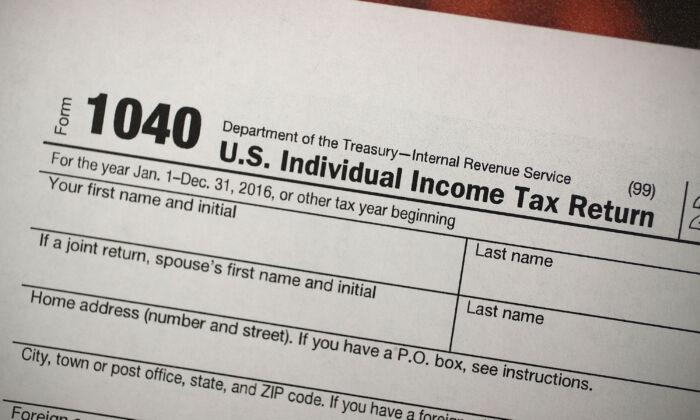The Internal Revenue Service (IRS) said that more than 1 million American taxpayers could miss out on about $1.5 billion in unclaimed refunds.
“Time is running out for more than a million people to get their tax refunds for 2019,” said IRS Commissioner Danny Werfel in a news release. “Many people may have overlooked filing a 2019 tax return due to the pandemic. We don’t want people to miss their window to receive their refund.”
Taxpayers have three years to file their taxes and claim their refund. However, if they miss that deadline, the refunds will become the “property” of the U.S. Treasury Department instead.
But for the 2019 returns, taxpayers have more time than usual. The three-year window for unfiled returns was postponed by the IRS until July 17, 2023, due to the COVID-19 emergency that was declared by the federal government.
Meanwhile, the IRS warned that “taxpayers seeking a 2019 tax refund that their checks may be held if they have not filed tax returns for 2020 and 2021,” according to the release. “In addition, the refund will be applied to any amounts still owed to the IRS or a state tax agency and may be used to offset unpaid child support or past due federal debts, such as student loans.”
The IRS said that the average median refund for tax returns in 2019 was $893. Some taxpayers could get more, namely those who qualified for the Earned Income Tax Credit, according to the IRS, noting that the credit was worth as much as $6,557 in 2019.
The standard tax deduction in 2019 was $12,200 for individuals, $18,350 for heads of household, and $24,400 for married couples who jointly filed their taxes, said the IRS, according to the agency’s website.
In all, some 1,469,000 Americans are likely due an unclaimed refund for the tax year 2019, the IRS said.
The agency also listed the estimated number of individuals who may get a 2019 income tax refund by state. California, Texas, Florida, New York, and Illinois had the largest numbers of such taxpayers, respectively.
It recommended that people start filing as soon as possible to gather the necessary documents. They’re also encouraged to communicate with their employer, bank, or another payer for any possible missing documents, including the W-2, 1099, 5498, or 1098 forms.
Should an individual experience problems in obtaining documents from a payer, they can order a wage and income transcript via the IRS.gov website. Another way to obtain those documents is by filing a wage and income transcript with the tax agency.
Other Recent IRS Notices
In a separate news release, the IRS confirmed it sent bills to taxpayers with incorrect due dates, telling some residents in California that payments were due in three weeks. Instead, those taxpayers have until later in 2023 to pay.“The IRS reassures California taxpayers that they continue to have an automatic extension until later this year to file and pay their taxes for those covered by disaster declarations in the state,” the IRS said, adding that “these letters include a special insert that notes the payment date listed in the letter does not apply to those covered by a disaster declaration, and the disaster dates remain in effect.
Last month, the agency issued a warning that it continues “to see a barrage of aggressive broadcast advertising, direct mail solicitations and online promotions involving the Employee Retention Credit.” While the credit is real, “aggressive promoters are wildly misrepresenting and exaggerating who can qualify for the credits,” the IRS said.
The agency warned that taxpayers who claim the credit, known as ERC, could face time-consuming and costly audits. Despite the risks, some companies are continuing to run advertisements to try and get taxpayers to claim the pandemic-related credit.
The credit is available to all eligible employers of any size that paid qualified wages to their employees, however different rules apply to employers with under 100 employees and under 500 employees for certain portions of 2020 and 2021.





